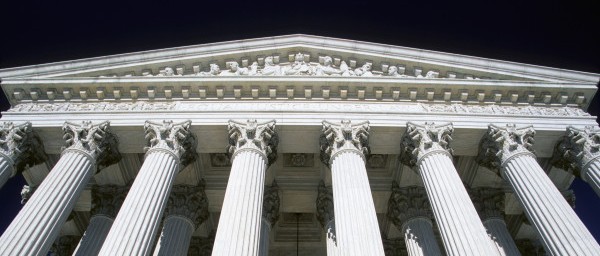Supreme Court Vacates Lower Courts Ruling Upholding Affirmative Action

The Supreme Court’s decision today on an affirmative action case out of Texas doesn’t change much. The lower courts had granted the university summary judgment, but the Supreme Court today vacated the lower court decision ruling that the court did not apply a strict enough standard to the case which is now remanded back to the lower courts for further proceeding.
Justice Ginsburg was the lone dissenter. Justices Thomas and Scalia concurred in separate opinions, and Justice Kagan recused herself having worked on this case previously in her capacity as an Obama administration lawyer.
From the majority opinion, written by Justice Kennedy:
The parties asked the Court to review whether the judgment below was consistent with “this Court’s decisions interpreting the Equal Protection Clause of the Fourteenth Amendment, including Grutter v. Bollinger, 539 U. S. 306 (2003).” Pet. for Cert. i. The Court concludes that the Court of Appeals did not hold the Universityto the demanding burden of strict scrutiny articulated in Grutter and Regents of Univ. of Cal. v. Bakke, 438 U. S. 265, 305 (1978) (opinion of Powell, J.). Because the Court of Appeals did not apply the correct standard of strict scrutiny, its decision affirming the District Court’s grant of summary judgment to the University was incorrect. That decision is vacated, and the case is remanded for further proceedings.
Justice Scalia’s concurrence, in which he notes that he votes with the majority not to overturn because the plaintiffs didn’t ask for that:
I adhere to the view I expressed in Grutter v. Bollinger: “The Constitution proscribes government discrimination on the basis of race, and state-provided education is noexception.” 539 U. S. 306, 349 (2003) (opinion concurringin part and dissenting in part). The petitioner in this case did not ask us to overrule Grutter’s holding that a “compelling interest” in the educational benefits of diversity canjustify racial preferences in university admissions. Tr. of Oral Arg. 8–9. I therefore join the Court’s opinion in full.
Justice Thomas writes in his concurrence that he would have gone further and ruled affirmative action policies as unconstitutional in general:
I join the Court’s opinion because I agree that the Court of Appeals did not apply strict scrutiny to the Universityof Texas at Austin’s (University) use of racial discrimination in admissions decisions. Ante, at 1. I write separately to explain that I would overrule Grutter v. Bollinger, 539 U. S. 306 (2003), and hold that a State’s use of race inhigher education admissions decisions is categorically prohibited by the Equal Protection Clause.
Thomas, I think, has the right of it. If we believe that basing admissions or hiring policy on skin color is bad, then it must be bad in all circumstances. The only way to achieve an equal society is to treat everyone equally under the law. Affirmative action laws, by definition, treat people unequally because of their race.
But the court has now applied a tougher standard to affirmative action policies, allowing them only in situations where “no workable race-neutral alternatives would produce the educational benefits of diversity.” That, at least, is a step in the right direction.







